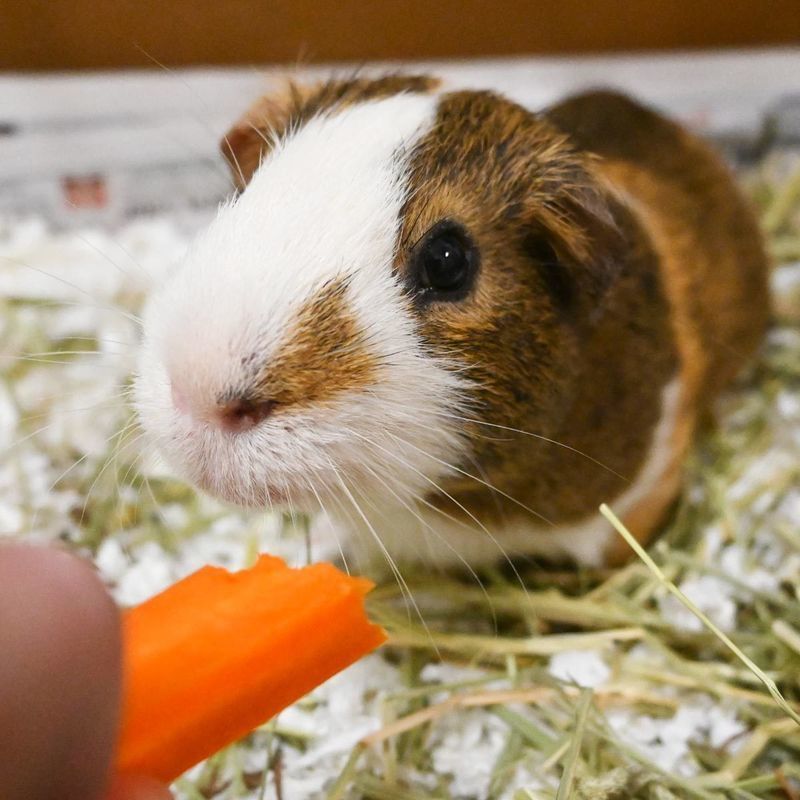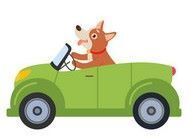Rabbits may be easy to love, but they are not quite as easy to care for. Rabbits are social creatures and wonderful companions to people who take the time to learn about their needs. Below is an outline of how to care for these adorable creatures.
Help Them Hop To It
Just because rabbits are little does not mean they don’t need room to roam. A cage for a six-pound rabbit should be at least 18 inches high, 36 inches wide, and 36 inches deep. Cages with wire bottoms should be avoided if possible, as the wire can give rabbits sores on the bottoms of their feet. An easy solution to a wire-bottomed cage is to put flat pieces of cardboard over the wire to protect their feet. Cardboard or wooden boxes in the cage can also give rabbits a comfortable place to hide, another level to hop up on, and something safe to chew on. More importantly than the type of cage a rabbit has, rabbits must be given time to exercise outside of their cage each day! Caged rabbits that do not get time to roam free become depressed and/or aggressive, and are not as healthy.
Please Put Litter in Its Place
Rabbits can easily learn to use a litter box. Rabbits prefer to eliminate in corners, and will often return to the same place. Determine where they prefer to go (whether they roam free in a home or live in a cage) and then place a corner litter box there to help them become litter box trained. An interesting fact about rabbits is that they are coprophagic, meaning they eat their own fecal pellets, especially in the morning since these pellets are more rich in nutrients. It is important to stay away from litter that may be harmful if eaten. Cat litter made of clay can be harmful to rabbits if eaten, and the dust is not good for their respiratory systems. Also, stay away from cedar or other strong scented wood shavings. These can also be harmful to rabbits. Use shredded paper, recycled paper litter, or grass hays such as timothy hay.
A Balanced Diet
Timothy hay and other grass hays such as orchard hay, botanical hay, and oat hay should be a rabbit’s primary diet and should be available at all times. Alfalfa hay is very rich in protein and, although it is great for young, growing rabbits, it should be avoided in adult rabbits six months of age and older. Excessive protein can cause health problems in adult rabbits, so it is important to limit or avoid alfalfa altogether.
Rabbit pellets made from alfalfa or timothy hay are available. Alfalfa pellets are the most common, and are great for growing rabbits under six months of age, but since they have more protein they should be given in limited quantities to adult rabbits. Timothy pellets are preferable for rabbits over six months of age. (See the Proper Rabbit Diet page for more information.) It is important to stay away from “gourmet” pellets that include peanuts, seeds, colorful cereal and other additives. Rabbits can choke on the seeds, and these added things can be comparable to “junk food” for people and are unnecessary.
Treat your rabbit with fresh greens, veggies, and fruits! These should be given on a daily basis in limited quantities. It is also important to give a variety of fruits and vegetables and switch things up regularly to offer a more diverse and interesting diet for your rabbit. (For a list of good and bad greens, fruits, and veggies, see the Proper Rabbit Diet page.) Stay away from commercial rabbit treats, such as yogurt drops or honey seed treats. These have too much sugar and are not healthy for rabbits.
Chew on This
Chewing is part of a rabbit’s natural behavior, and helps them keep their teeth worn down. To keep rabbits active and amused, give them untreated wood blocks, cardboard, paper towel rolls and toilet paper rolls. Avoid plastic toys and objects with sharp edges, loose parts, or soft rubber that rabbits could chew into pieces and swallow.
Handle with Care
Never pick a rabbit up by their ears. Always use two hands and support the rabbit's back legs to keep them from feeling vulnerable and kicking out. Ideally, rabbits should be allowed to come out of their cage on their own. Introduce a hand for them to sniff and go slow when attempting to hold a rabbit. Pay attention to their wants and needs. If they do not want to be held, do not force the interaction. It will not be pleasant for either of you! Rabbits that are allowed to explore, sniff, and approach you when they are ready are much happier and will bond with you easier.
Veterinary Care
Rabbits need routine health check-ups, and finding a veterinarian with a lot of rabbit experience is crucial. Although they do not need vaccinations, rabbits should be checked over to make sure their teeth and nails are not growing too long and their ears are free of mites.
Rabbits Need To Be Fixed, Too!
Cats and dogs are not the only animals that are overpopulating! There are many unwanted rabbits that end up in shelters and rescue groups, so it is important not to add to the already growing population. Spaying or neutering your pet rabbit is a good idea for many reasons. Intact males spray urine to mark their territory, and neutering reduces the pungent smell of their urine and the desire to spray. Unspayed females have a higher risk of getting cancer, and they can be very aggressive and unpleasant to be around during their heat cycles, which are frequent! Fixing your rabbit will make for a happier, healthier, and more pleasant rabbit!
Rabbit Agility
Get hoppin’ on the new rave by enrolling your bunny in agility classes, or make up your own little obstacle course. Bunnies can jump through hoops and over little hurdles and really love the exercise, attention, and challenge of learning new things. To learn more about rabbit agility courses offered at the Animal Humane Society, visit this link: https://www.animalhumanesociety.org/behavior/rabbit-training-and-socialization









